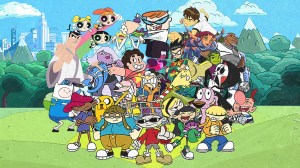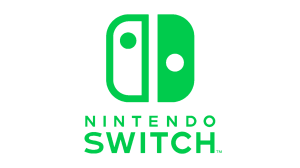Horror has experienced a revival in the American comics market over the past decade.
Videos by ComicBook.com
You can see more bloodsuckers than ever in comics like American Vampire or The Belfry, or see all sorts of other monsters in the pages of Hellboy or B.P.R.D., but there’s one sub-genre that has led the rest: zombies.
It doesn’t take a genius to guess why either. The Walking Dead is a smash hit in comics stores and on TV, and there’s nothing like success to inspire imitation. So of course you can find an array of zombie comics, ranging from the great to the mediocre. Surprisingly though, The Walking Dead isn’t the best zombie comic being published today (although it’s definitely in the top 3).
The best zombie comic coming out in America right now is I Am A Hero by Kengo Hanazawa. Dark Horse Comics began adapting the manga into English translations last year, but the series has been running in Japan since 2009 where it’s currently on its 22nd volume. We are just starting to catch on here in the states, but it’s easy to see why it has been around for almost a decade once you start flipping pages. The series features Hideo Suzuki, a lazy artist with no drive, who finds himself in the midst of a zombie plague with one of the only rifles in Tokyo. It’s a riveting read.
Here are 5 reasons why it’s the absolute best zombie comic being published today.

The Slow Revelation of Horror
One of the advantages of manga is that it’s not constrained to a 20+ page monthly package. Having a variety of assistants help a series’ artist allows for a much more challenging production schedule with many more pages on which to expand a story. That’s something Hanazawa has taken full advantage of for the series most dramatic moments. He will regularly utilize 5 or more spreads in order to breakdown a single moment that might only occur over the course of a single second.
In the very first volume there is an instant where a crashing airplane strikes a person with its landing gear. Rather than deliver the blow in one instant, readers have to watch as the wheels draw closer, hit the person, annihilate their body, then crash through cement. Each turn of the page reveals new horrors and increases the reader’s sense of dread. This choice inverts the typical method of shocks by slowing down revelations rather than relying on a sudden page turn. It’s a brilliant choice that really pays off.

Varied Peoples and Places
Setting the story in and around Tokyo provides endless fodder both in regards to setting and characters. The absolute chaos that would surround a zombie outbreak in one of the most densely populated areas on earth provides a non-stop deluge of changes for the story. Nowhere is safe and that means the protagonists must keep moving at a breakneck pace. Within the first few volumes you jump between apartment complexes, highway hauls, amusement parks, and cabin retreats, and never have a chance to get settled.
This also means Suzuki is encountering new people every few chapters. They often play out like mini-tragedies (often with a comedic edge) as individuals are killed almost as quickly as they appear. From high school students to feuding couples to cab drivers, there’s a wide array of people who come through the panels of I Am A Hero, not that many of them last.

A Really Relatable Regular Guy
The truth behind most zombie stories is that the “typical guy” isn’t very typical. They find it in themselves to commit acts of incredible heroism or terrible depravity. Their choices are decisive or caricature the pits of human depravity. Ultimately the heroes of these stories are exaggerations. For better or worse, probably worse, Hideo Suzuki really seems like a regular guy and reflects how someone grounded in normality might reflect to this sort of scenario.
He is often torn over moral decisions and finds his indecision just as troublesome as any choice. Power is just as regularly taken from his hands as circumstances leave him with no choice but to run. There are no major character redefinitions, as that’s not how life really plays out. Suzuki is a relatable, understandable and consistent human being. He responds based on who he was before the apocalypse, not as how he would hope to be after it has happened. That level of realism and character-driven storytelling is admirable.

Truly Horrifying Images
Hanazawa does not hold back when imagining the creepiest images possible. He features lovers chewing one another’s faces off, babies biting at heels, and even more terrible nightmare fuel. I Am A Hero ought to come with a reader beware warning because it never holds back. If you enjoy horror, but hesitate at gore, then this may not be the comic for you.
However, if you enjoy some truly creepy moments that won’t leave your brain for years to come (like most zombie fans), then you’re in for a treat. This comic offers some incredibly well rendered panels that combine design and concept into a perfect blend of images that will keep you up well past your bedtime.

Surprises Beyond Shocks
It’s easy to shock a reader. You can kill a character with no warning or compose a particularly gruesome image. It is much harder to offer deeper surprises than shock though. I Am A Hero is filled with shocks, but it offers those deeper surprises as well. Much of that is founded in its character-driven storytelling. You get to know the characters who last well enough that the smallest changes can surprise you a great deal.
Watching the people of this comic learn and grow in their situation in a very realistic fashion, one that often prevents them from changing by more than centimeters, makes these surprises much more substantial. Relationships that grow from a situation of incredible anxiety and choices that stem from a long line of previous decisions are very rewarding. While it’s still a blast to see the most gruesome new zombies and terrifying slow-motion kills, it’s the longform storytelling of I Am A Hero that makes it the best zombie comic today.









